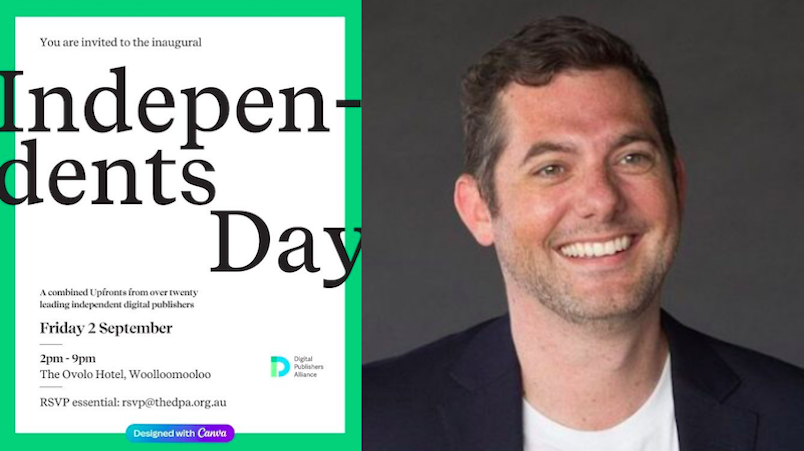The IMAA versus NSW Government: Indies are better off leaving the price-driven drudge work to the holdcos
Indie agencies railing against being precluded from the $73m-plus NSW Government master media account might actually have dodged a bullet. They have valid concerns about being ruled out. But it's cost-driven, low margin work that's best left to holding companies. A rewording of the tender won't change that. What they need from the NSW Government is a complete reprioritisation and possibly a multi-tender approach.
The recent stoush between the IMAA and the NSW Government over the media buying account tender process raises interesting questions.
I can understand and get behind the principles. The IMAA has raised valid arguments about the apparent fractures between stated NSW government procurement policies and the way in which this tender has been structured and conducted.
Essentially, independent agencies are excluded. Unless there’s some loophole or alternative interpretation, the tender structure does not allow the NSW Government procurement policy regarding awards made to SMEs to be applied. And the potential for conflict of interest in the mysterious advisory committee involved in guiding the NSW Government team has also been cited as a problem.
‘The local media buying industry has taken a big hit over the last 18 months’’ said Sam Buchanan, GM of the IMAA. “To have the NSW Government exclude us from this contract is not in the national interest. This will send the money offshore to support another country’s economy and not our own.”
True. But isn’t this a case of ‘be careful what you wish for’?
Other than the larger independents (I’m aware that Atomic 212 is part of the current roster, and to be fair this agency, based on quotes in a previous article, appears disappointed at the prospect of losing its share of NSW Government business), most independents would have a hard and unfulfilling time working on this pitch, and if they win, the same would probably apply to working on this account.
The complexity of sourcing
The complexity of government procurement is a bit mind-boggling. Rightly so in some respects, given that they are dealing with public money.
Government tenders are notoriously fickle, exhausting and time consuming. They are mandated to occur every three years, so there’s no possibility of significant longevity without the prospect of re-pitch.
The current tender process is said to last from July this year ‘well into 2022’.
I’ve run many tender processes – creative, media, digital, across Australia, New Zealand and other markets. I’ve worked with many independent agencies in these projects. And I can tell you that even with TrinityP3’s relatively straightforward, 12 week approach, some independent agencies groan under the strain of what’s required.
I know the rewards for the NSW Government tender are very high (in volume, if not in profitability, I’ll come to that in a moment).
But how many independent agencies out there, either working alone or somehow clubbed together, are going to be willing or able to last the distance in such a monster of a process, without significant strain on people and potentially on existing clients?
The irony of ‘low cost’
A significant factor in all Government media agency tenders, however they’re structured, is inventory cost. As mentioned, the government deals with public money and therefore, a focus on media inventory rates is to be expected, at least within reason.
The way this tender has been positioned emphasises cost even further.
Much has been said about the fact that independent agencies simply don’t have ‘the scale’ to meet this tender brief. It’s not just about the resource requirement of ‘one company covering the entire $73m’; it’s about the low-cost inventory requirements that will apply to every department campaign, large or small.
To this I’d add – despite the calls from the IMAA – why would independents even want to work in this environment?
Pretty much every independent media agency I’ve spoken to consciously bases its proposition on the opposite of low-cost scalability.
Independent agencies talk about the fact that quality is far more important than cost. That they wouldn’t want to work on a cost driven piece of business.
That strategic nous, experience and close trust-based relationships are critical. That they are selective about this because they want to grow in the right way and attract the right people.
That these types of cost or procurement driven accounts are for the holding companies, working as they do with relatively junior staff, arcane and opaque media owner relationships and trading agreements.
Viewed in this context, whilst I’ll say again that I think they’re right in principle, no doubt you see the irony of the IMAA wanting independents to be included in the NSW Government tender, even as part of a panel.
The challenge of profitability
It’s well acknowledged that even large agencies, with far more capability when it comes to extracting profit via scale, can struggle to make meaningful margin from low-fee, high volume clients. Independent agencies are fundamentally not set up to succeed with this approach. Nor do they want to. It’s one of the reasons they’re independent.
Jimmy Hyett, CEO of This is Flow, was quoted in a recent Mi3 article talking about the focus on cost in the NSW Government. Whilst well intentioned and appropriate, he suggested that ruling out independents by stipulating a single supplier potentially reduces the strategic benefits gained by employing a diverse range of agencies.
As Hyett puts it, "Diversifying the thinking part – planning and strategy – would create huge benefits.” Which is right, for at least some of the government campaigns that a media agency would need to plan. And which talks to the above-mentioned proposition of many independent agencies.
But is the NSW Government going to pay properly for strategy? Does it even value what a strong indie would describe as strategy? Or is it more likely that, whatever the department or budget, it will pay a low commission or fee against media buying, which will, by definition, include ‘media planning and strategy’ within scope?
When the demands and cost of servicing an account of this nature are factored in, the profitability just isn’t going to be there.
The (probably immovable) reality of tender structure
The scope of a government account is obviously complex but the way the tender process is structured does not help in terms of securing the right agency for the right job.
Different government departments have different expenditure levels, different strategic requirements, there’s a very long tail of lower-spending departments.
It is likely that some of these departments would benefit more than others from the strategic input Hyett describes – and, from smaller agencies generally, independent or not. They also would not necessarily need ‘scale’ for the type of campaigns they run. But this procurement process, driven by cost-efficiency, effectively lumps everything back into one basket, which of course has driven the exclusion of independents from consideration.
As much as the IMAA laments the current situation, a removal of the ‘holding group’ structure stipulated in the EOI or a change in the current tender process won’t be enough; what they need from the NSW Government is a complete reprioritisation, an about-face and possibly, a multi-tender approach.
For example, a more objective way to allow proper opportunity for independents, and deliver a better-fit roster, is to create a small number of segments across the various government departments by spend level or requirements, and then run a specific-scope tender process for each segment. And within this, a different operating model (agency fee structure, KPIs, different emphasis on inventory cost versus strategy, etc.) to recognise the types of work involved.
A structure of this type would allow diverse selection, it would allow the right agencies to apply for the right scope, with the right rewards; in exchange, the NSW government would receive more tailored outputs and better outcomes.
But, of course, in the hunt for low cost and rationalisation, nothing of the kind appears to be on the table. Leaving the question for independents ‘what are we even aiming at?’
The reality of risk versus reward
Hyett also says that even if the tender is opened to independents (as it currently stands), the result (hiring a holding company) may well end up the same. Also correct, in fact almost certain.
I don’t own an independent agency, he does, so I’m saying this with the greatest respect – even if the NSW Government changes the ‘holding company’ clause, doesn’t this leave independent agencies in a place where they’re putting a massive effort into a monster, 18 month long process, with hardly any chance of real success?
And even if successful – for all the other reasons mentioned in this article, what would the actual rewards look like?
The 'risk in, reward out' calculus just doesn’t add up to me, and based on many conversations with indie agency owners, I’d guess the majority would feel the same way.
So while I salute and agree with the IMAA on principle, I don’t necessarily agree with the fight. Yes, in theory, independent agencies should be given a chance to compete. But in reality, is this the sort of account they should actually want?
Let the holding companies tie themselves up in the NSW Government tender. If nothing else it should open the field to independents interested in other, more suited pieces of business that the holding groups will no longer have the capacity to pitch for.







